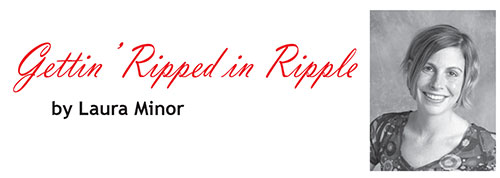
|
Broad Ripple Random Ripplings

The news from Broad Ripple
Brought to you by The Broad Ripple Gazette
(Delivering the news since 2004, every two weeks)

|
| Brought to you by: |

|

|

|

|

|

|
Converted from paper version of the Broad Ripple Gazette (v12n20)
Gettin' Ripped in Ripple - Inspiring Autism - Guest Columnist Rosie Edwards - by Laura Minor
posted: Oct. 02, 2015

Inspiring Autism
It all began with a vision, the vision of two mothers who had sons with autism. These inspiring women envisioned a school where their sons would be accepted for who they were, to be encouraged to develop real life skills, with a curriculum that would meet their academic needs and above all, give them a home. By 2008 Susan LeVay and Ruth Padgett had realized their dream, The Independence Academy opened with the aim to live up to its name by developing true independence for its students. Susan and Ruth had worked tirelessly, overcoming many obstacles to open a school solely for children with high-functioning autism/Asperger syndrome - junior through high school.
I had the privilege of working alongside Susan and Ruth for 4 years as a teacher at IA. Students thrived in an accepting environment and were encouraged to find and develop their own sensory supports that could be used both in and outside of school. IA is different in the sense that the students are allowed to take sensory breaks when feeling upset, they also have a portion of the day dedicated to life-skills which prepares students for the real world.
As a fitness fanatic I have always loved sports. However for many students with autism, sports can be daunting and overly challenging, often presenting sensory overload. When exploring the relationship between physiological components and autism it became apparent that this population would benefit from an intervention.
• Adolescents with autism are more susceptible to weight gain with 19% of the autistic population diagnosed as obese and a further 36% overweight.
• Medication, unusual dietary patterns, difficulty self-monitoring and using fine motor skills are just a few issues that individuals with autism face.
• Fear of social interactions can make joining a neurotypical sports setting overwhelming and somewhat unrealistic.
Many of our students came to class tired and lethargic so we saw a chance and jumped on it. Unfortunately in today's society, when funds are cut in schools, expressive arts and physical education are often cut. I was fortunate to have the support of the amazing IA staff and our 'go getter' Director Marisa Gill. We had the flexibility to incorporate a daily 20 minute morning exercise break in addition to recess and gym.
There was a fine line between keeping exercise fun and turning it into a regimen, so we kept it light. Hydrotherapy and horseback riding is highly sought after, however due to our limited space and lack of horses at IA, we made the best out of the parking lot.
The key components of health we focused on were muscular strength, endurance, agility, balance and flexibility all in the form of games. Slowly but surely our students came around to the idea and their energy levels increased, they became more alert and some began to choose healthier snacks because it "made them feel better".
One student in particular inspired me to delve a little deeper when he asked if we could begin an after school club because he was getting old (at 14), and he believed it was time for him to get in shape. By Christmas, 50% of our students were attending the after school class and every week they became faster, stronger and most importantly, smiled more.
In my opinion, all kids need exercise, I watched our students become true team players. They encouraged one another during gym time and replaced squabbling over equipment with high fives. This is particularly significant when you consider that:
Regardless of age or ability, exercise can be incorporated into everyday life. Studies have shown that increased aerobic exercise can significantly decrease the frequency of negative, self-stimulating behavior. I noticed a significant improvement in mood and positive self talk following exercise time. Many of the classroom distractions such as body rocking, spinning, hand flapping, object-tapping, and light gazing are common in our students. By engaging them in physical activity, we allowed a welcome distraction and as a result saw fewer outbursts.
I am very fortunate and grateful to have had the opportunity to work with this fascinating and inspiring group of young people and look forward to further developing autism awareness in our community.
Contact Rosie at redwards@my.com for information on the upcoming Sunday group fitness classes specifically for adolescents with autism and Asperger's at SoBeFit.
Laura Minor owner and operator of So.Be.Fit. Personal Training and Fitness studio located at 54th and the Monon. She is passionate about teaching others how to "FIT" exercise and physical activity into their daily lives, and have fun while doing so! Visit her website at www.sobefitindy.com or e-mail laura@BroadRippleGazette.com
laura@broadripplegazette.com

|

|

|
| Brought to you by: |

|

|

|
| Brought to you by: |

|

|

|


